Review of Apocalypse Now: The Complete Dossier
Introduction
Loosely based on Joseph Conrad`s `Heart of Darkness`, `Apocalypse Now` tells the story of Captain Willard who, at the height of the Vietnam war, is languishing in a Saigon hotel desperate for a mission. When his wish is granted and orders are issued, they are far from anything he had anticipated: to travel into Cambodia and `terminate with extreme prejudice` the command of Colonel Walter E. Kurtz, a highly decorated and talented Green Beret. Kurtz has set himself up as a god in Cambodia, has stopped following orders and begun his own war, fighting it his way using methods the generals in Saigon describe as `unsound`. As Willard travels upstream, he learns that the more that the army try to make Vietnam seem like home, the more alien it is and that it is perhaps only he and Kurtz that fully understand `the horror` of war and how to fight it.
With `Apocalypse Now` and `Apocalypse Now: Redux` already available on DVD, you have to ask `is this release really necessary?`. Given that Coppola nearly bankrupted himself, suffered a nervous breakdown and lost over 100lbs in order to make the film, one can`t but help to have some sympathy with him maximising his returns. However, one must ask `what makes this worth buying?`.

Video
The anamorphic 2.00:1 transfer on `Redux` (from where the screenshots have been taken) is nigh on flawless and nothing showcases it better than Lt. Col. Killgore`s Air Cavalry attack on the Vietcong stronghold: the colours of the sky, water and jungle are beautifully defined and there is no sense of blurring whatsoever. However, there is some slight graining on the theatrical version, which is a shame as I`d hoped that for `The Complete Dossier`, the transfer would have been re-mastered to the quality of `Redux`.
There are English and Spanish subtitles available.
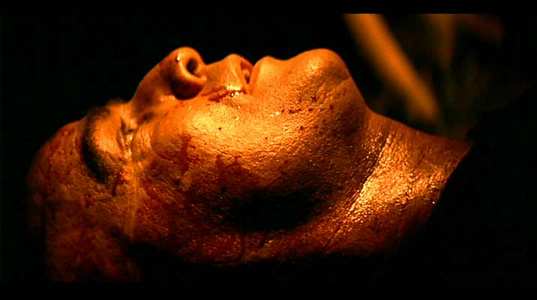
Audio
The sound on the film is quite exceptional, was the first to use the new 70mm Dolby Stereo surround sound system, and the mixing process apparently took over nine months to complete. This was done without the use of any digital equipment and stands up today as a phenomenal piece of sound engineering; one example is when the sound of the helicopter rotor blades blend into the sound of the ceiling fan in Willard`s hotel room yet you can still hear the sounds from the street outside.
Technical details aside, Carmine Coppola`s score captures the mood of the film perfectly and the soundtrack, which includes songs by The Doors and The Rolling Stones to evoke the period, together with Wagner`s `Ride of the Valkyries` during the attack on the Vietcong stronghold epitomises the lunacy and surreality of the war. The audio is presented in a superb Dolby Digital 5.1 mix.

Features
Francis Ford Coppola provides a feature-length commentary for both versions of the film although the commentary was done as he was watching `Redux` and has been cut for the theatrical version so that he does not mention any of the footage in `Redux` whilst you`re watching the theatrical cut. I would recommend foregoing the commentary on the theatrical cut and just listening to it on `Redux`. Coppola is an articulate and engaging speaker and the commentary is full of information and at no point becomes boring.
Sadly, there is no `Hearts of Darkness: A Filmmaker`s Apocalypse` documentary within the set, although there are many other features spread across the two discs, the bulk of which are on disc two.
Disc one contains an introduction to both versions of the film by Coppola, which set up the film well and let you know what you are in for when you listen to the commentary.
Marlon Brando reads the complete `The Hollow Men` by T. S. Elliot, which accompanies documentary footage shot by Eleanor Coppola which runs at 17 minutes. The poem is given a unique reading by Brando, who delivers it in character.
The `Monkey Sampan` seems to be a deleted scene with the natives singing The Doors` `Light My Fire` and Willard`s PBR passing a sampan, seemingly crewed by monkeys, with a corpse hanging from it. If there was ever any doubt that `Apocalypse Now` was reflecting the absurdity of the Vietnam war, this dispels it!
There are twelve `additional scenes` which run at 26 minutes, almost unforgivably without a `play all` option.
The `A/V Club Featurettes` comprise four sections showing how the film almost introduced 5.1 sound, how this is best illustrated in the `Ghost Helicopter` sound that starts the film, an article from `Contemporary Keyboard Magazine` about Bob Moog and synthesized sound which you have to scroll through using the right and left arrows on your remote. Finally there is a `Technical FAQ` section which answers six of the most common queries about the film.
Disc two contains `The Post Production of Apocalypse Now`, four featurettes about the editing, music, sound and mixing of the film. The segments can be watched separately or, using the `play all` option as one documentary running 51 minutes. These are all excellent and show the exhaustive process of turning `A Million Feet of Film` into a cohesive movie (and `Redux`), how the Oscar-winning sound was created over a nine-month period.
There are also three four-minute features on the release of `Apocalypse Now` at Cannes and the 2001 release of `Redux`; interviews with the members of `PBR Streetgang` and `The Color Palette of Apocalypse Now` which focuses on the process by which the film was dyed to give `Redux` a more distinctive look than the 1979 release. Finally, there is a feature by which you can watch the film and a marker appears in the lower right hand corner indicating which scenes are unique to `Redux`.
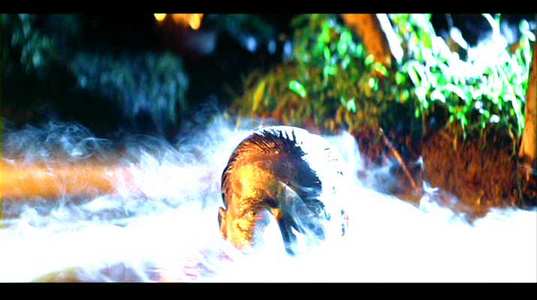
Conclusion
Enough has already been written and said about `Apocalypse Now` to make it unnecessary for me to repeat it here, but needless to say that among the best films that Francis Ford Coppola has made, it ranks alongside `The Godfather Part II` as one of the true greats.
`Apocalypse Now` premiered in 1979 and has been available on DVD since 2000 with the `Redux` version premiering and appearing on DVD the year after. `Redux` has 49 minutes of extra material and, although it is fundamentally the same film, the added footage lightens the mood from the dark and introspective tone of the theatrical cut whilst emphasising the absurd nature of the war: there is more banter between Willard and those on the boat with him, a scene where Willard buys sex with the Playmates for the men with fuel, Willard steals Killgore`s surfboard and finds himself a wanted man and the `French plantation` scene gives an historical perspective to the conflict in South-East Asia and the history of occupation in Vietnam. I feel that `Redux` is the weaker of the two versions but to be able to compare them is important when attempting to understand what Coppola was trying to create over the torturous shoot.
The making of `Apocalypse Now` is almost an analogy for the Vietnam war itself: Americans, full of money and ambition, travel to a distant country that they know nothing about believing things will run smoothly then find that what can go wrong, does. Coppola even admitted afterwards that "we had access to too much money, too much equipment, and little by little we went insane." Martin Sheen had a heart attack, Francis Ford Coppola had a nervous breakdown, Marlon Brando turned up 100lbs overweight and not having read either the screenplay or `Heart of Darkness`, several members of the crew were kidnapped by Filippino guerrillas, the shoot was set back by a typhoon and ended up lasting over 200 days and costing over $30 million, nearly bankrupting Coppola. It is probably for these reasons that `Apocalypse Now` resembled the chaos of Vietnam more than most other films about the conflict and is the finest Vietnam War film and one of the greatest war films ever made.
As I own both versions of the film on DVD, I said I would never buy this set, but when I saw it at a decent price I thought `why not?`! I found it strange that the films are spread across two discs into `Act One` and `Act Two` meaning that you have to swap discs halfway through, as if the film is presented in a `roadshow` format. Previous releases have managed to fit the entire film onto one disc so it`s a mystery why disc one didn`t comprise `Apocalypse Now` with commentary and features with `Apocalypse Now: Redux` on disc two. As the film is split very well and at an opportune and seemingly natural moment, this is a minor irritant rather than a major hardship. For reference, disc one finishes and fades to black after the crew of PBR Streetgang search a Vietnamese boat, Willard shoots the Vietnamese woman and orders Chief upstream. Disc two fades from black and begins with the line "It was the way we had over here of living with ourselves: we`d cut `em in half with a machine gun and give `em a band-aid" prior to the Do Long bridge scene.
The question remains, `is this worth buying?`. If you do not yet own a copy of the film, or only one of the two, then the answer is a definite `yes`. Despite this not being the `complete` and definitive version due to the absence of the `Hearts of Darkness` documentary, if, like me, you are a `collector` and already own both versions then the extras make this set a fine addition to any DVD collection and therefore worth serious consideration.
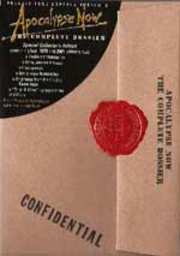
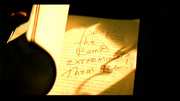



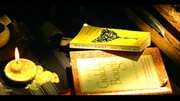
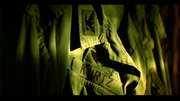
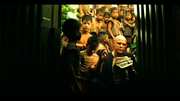
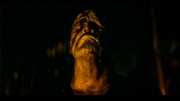
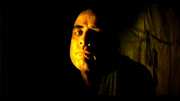
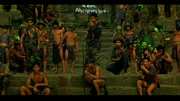
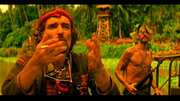
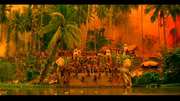
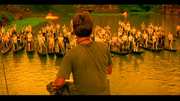
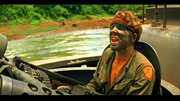
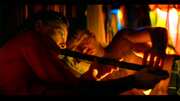
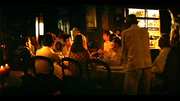

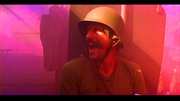
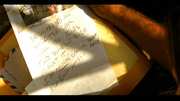
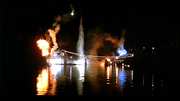
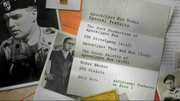
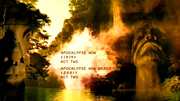
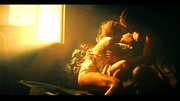
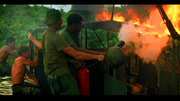
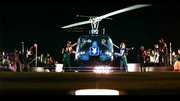
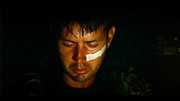
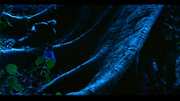
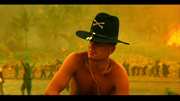
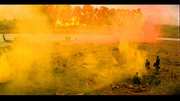
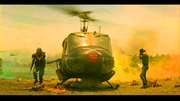
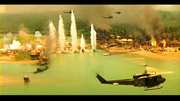
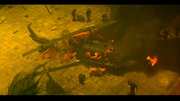

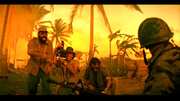
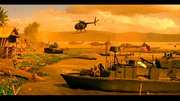
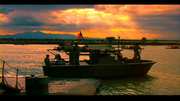
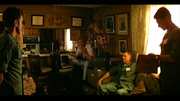
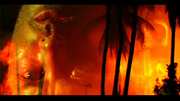
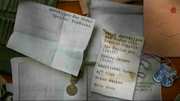


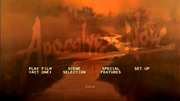
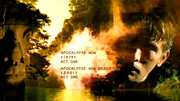
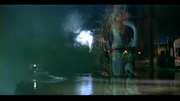
































Your Opinions and Comments
Be the first to post a comment!